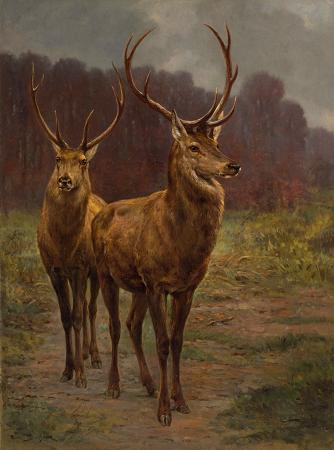
Rosa Bonheur. Rosa Bonheur, born Marie-Rosalie Bonheur, was a French artist, an animalière and sculptor, known for her artistic realism.
Her best-known paintings are Ploughing in the Nivernais, first exhibited at the Paris Salon of 1848, and now at the Musée d'Orsay in Paris, and The Horse Fair, which was exhibited at the Salon of 1853 and is now in the Metropolitan Museum of Art, in New York City. Bonheur was widely considered to be the most famous female painter during the nineteenth century.
Bonheur was born on 16 March 1822 in Bordeaux, Gironde, the oldest child in a family of artists. Her mother was Sophie Bonheur, a piano teacher; she died when Rosa Bonheur was eleven.
Her father was Oscar-Raymond Bonheur, a landscape and portrait painter who encouraged his daughter's artistic talents. Though of Jewish origin, the Bonheur family adhered to Saint-Simonianism, a Christian-socialist sect that promoted the education of women alongside men.
Bonheur's siblings included the animal painters Auguste Bonheur and Juliette Bonheur and the animal sculptor Isidore Jules Bonheur. Francis Galton used the Bonheurs as an example of Hereditary Genius in his 1869 essay of the same title. Bonheur moved to Paris in 1828 at the age of six with her mother and siblings, her father having gone ahead of them to establish a residence and income. By family accounts, she had been an unruly child and had a difficult
Her best-known paintings are Ploughing in the Nivernais, first exhibited at the Paris Salon of 1848, and now at the Musée d'Orsay in Paris, and The Horse Fair, which was exhibited at the Salon of 1853 and is now in the Metropolitan Museum of Art, in New York City. Bonheur was widely considered to be the most famous female painter during the nineteenth century.
Bonheur was born on 16 March 1822 in Bordeaux, Gironde, the oldest child in a family of artists. Her mother was Sophie Bonheur, a piano teacher; she died when Rosa Bonheur was eleven.
Her father was Oscar-Raymond Bonheur, a landscape and portrait painter who encouraged his daughter's artistic talents. Though of Jewish origin, the Bonheur family adhered to Saint-Simonianism, a Christian-socialist sect that promoted the education of women alongside men.
Bonheur's siblings included the animal painters Auguste Bonheur and Juliette Bonheur and the animal sculptor Isidore Jules Bonheur. Francis Galton used the Bonheurs as an example of Hereditary Genius in his 1869 essay of the same title. Bonheur moved to Paris in 1828 at the age of six with her mother and siblings, her father having gone ahead of them to establish a residence and income. By family accounts, she had been an unruly child and had a difficult
Wikipedia ...